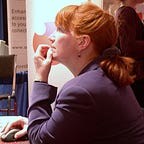Empathy
In August 1894, J.H. Wade II (1857–1926) and his family departed on an 11-month tour around the world traveling on their private ocean-going, steam-powered yacht, Wadena. The steamship was commissioned by Wade in 1891, a year after his grandfather, J.H. Wade I died. Wadena was a beauty, outfitted with a triple expansion steam engine, also rigged as a schooner for traveling under sail. She had a crew of 26 officers and men.
Wade was a young man in the 1890s. He and his wife, his mother and his mother-in-law traveled the world, enthusiastically collecting. The family focus in this period was the acquisition of goods for a future Cleveland Museum of Art. Throughout the 1890s Wade worked with energy and determination to see that his hometown — Cleveland Ohio — would eventually have a fine collection. Crates and crates of sculptures, textiles, metalwork, jewelry, ceramics, and basketwork where they sat for nearly two decades.
When the museum finally opened in 1916, Wade had the crates of material delivered. Now 59, though Wade was still enthusiastic about the museum, he watched the War in Europe with ever-growing concern. In April 1917, America entered the war, a month later Nellie passed away. That same spring Wade approached the Navy about acquiring the Wadena which they did in May 1917. She was designated SP-158 and fitted out at the New York Navy Yard for “distant service.”
One impetus for J.H. Wade and others like him was to provide North American communities with collections from around the globe. If we are honest other motivating factors included the desire and resources to see the world in style and to add glamor and glory to the family name. That said, in the 1890s the Wadena was the purposeful embodiment of specific collecting practices designed to bring the world to Cleveland. In 1917 the Wadena was given up by Jeptha Wade II, during a dark period of his life, as a gesture to salvage a world that to him must have seemed threatened with destruction.
In the light of current policies which call for the decolonization of museums, this blog post is a reminder to me that empathy is a useful tool in the human toolkit when considering the past as well as the present.
Our judgments judge us, and nothing reveals us, exposes our weaknesses, more ingeniously than the attitude of pronouncing upon our fellows.
— Paul Valery
